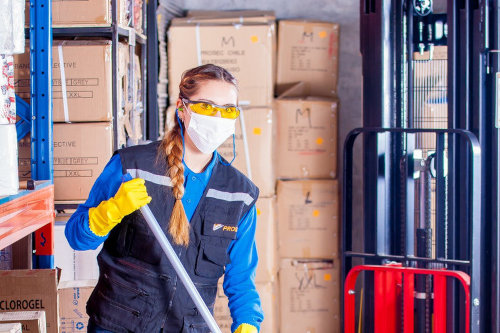Growing a business in any sector is a multifarious act, requiring close adherence to legal requirements as well as a keen attention to the adequate implementation of proper working practices. But one corner that is often underestimated by new business owners is that of health and safety – which is also one of the most important parts of any business’ operation. But why?

Why is Health and Safety an Important Consideration?
Workplace health and safety is a vital consideration for all businesses, for several reasons – but perhaps most prominently, health and safety procedures are a legal requirement. The Health and Safety at Work Act (HSWA) was introduced in 1974, requiring that all businesses recognise their duty of care to employees; later, the Management of Health and Safety at Work Regulations 1999 would require specific procedures, including the risk assessment.
But workplace health and safety is not merely a matter of legality for your business. You also have a moral duty as an employer to ensure your employees are as safe as they can be in their line of work and your employ. Besides, poor health and safety administration can lead to significant costs to business, whether a result of lost time and resources, reduced staff owing to injury or even civil action against the business.
With all this in mind, what actionable steps can you take to improve health and safety in the workplace?
How to Improve Health and Safety at Work
Instituting Health and Safety Policies
If you employ more than five people, writing out a robust health and safety policy – detailing your business’ approach to navigating risk and potential incidents – is a legal requirement. Even if you aren’t legally required to do so, this can make the procedure much more transparent if something does happen.
Providing PPE
One of the major ways in which businesses can adhere to the HSWA is in the form of providing adequate PPE equipment to prevent workplace injuries. The kind of PPE required changes from business to business, with occupational hazards ranging from the handling of toxic substances to heavy lifting and the use of destructive equipment.
Providing Training
Training is the process that puts policy and PPE together in practice. Informing employees of the legal requirements for health and safety, as well as methods for personal safety and their legal entitlements, will give them the resources to stay safe and supervise one another.
Inspiring a Safe Working Culture
Many of the above measures can be rendered ineffective if a workplace’s staff are not fully invested. As a business owner, ensuring a positive attitude to health and safety is fostered by employees is key to the success of any directives or health and safety targets. Training is one way to do this, but a general culture of safety and trust can beget further compliance with measures.
Giving employees a safe space to raise concerns can be helpful to this end, while encouraging teamwork and creativity in the workplace can improve cohesion – in turn, improving attitudes to work.